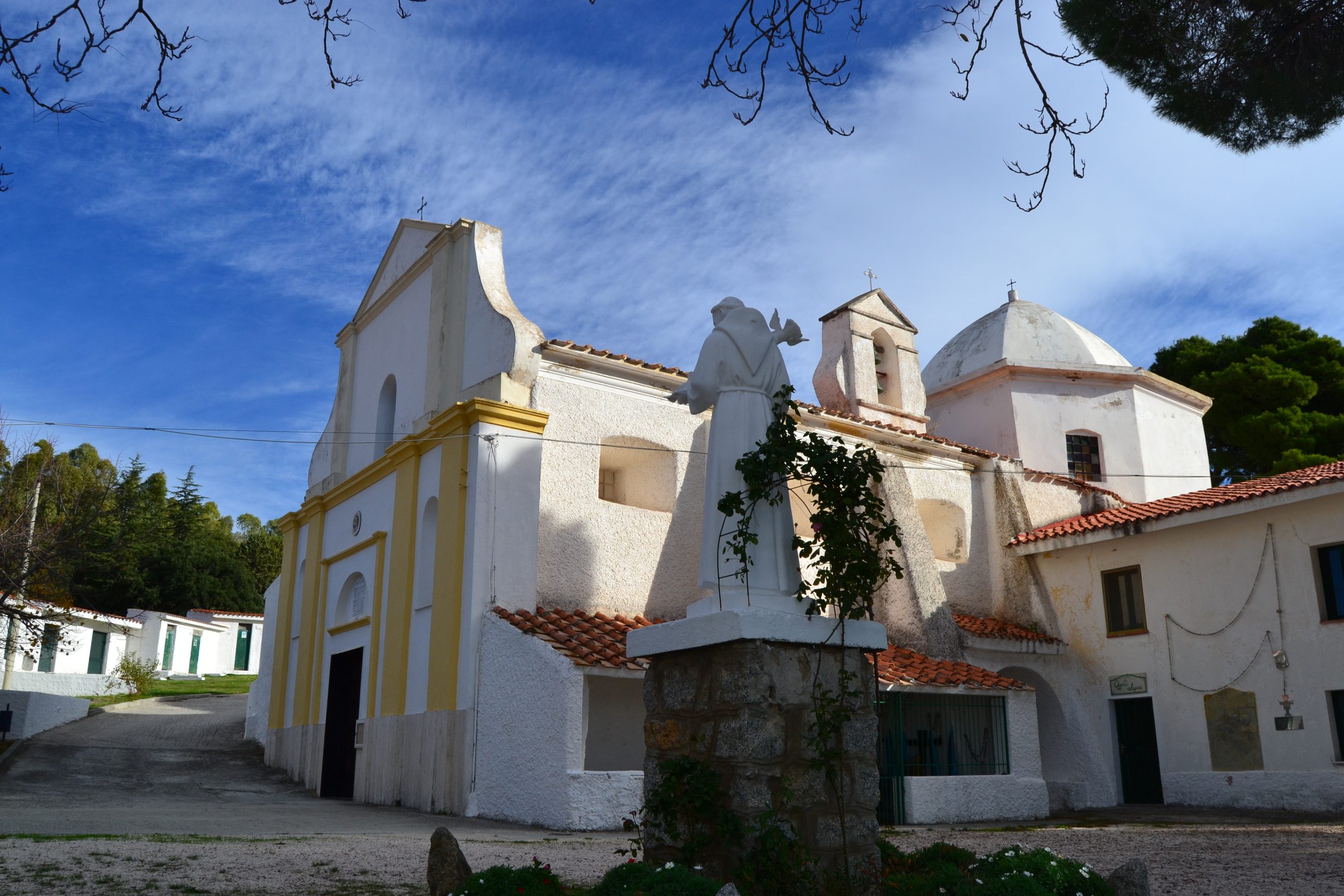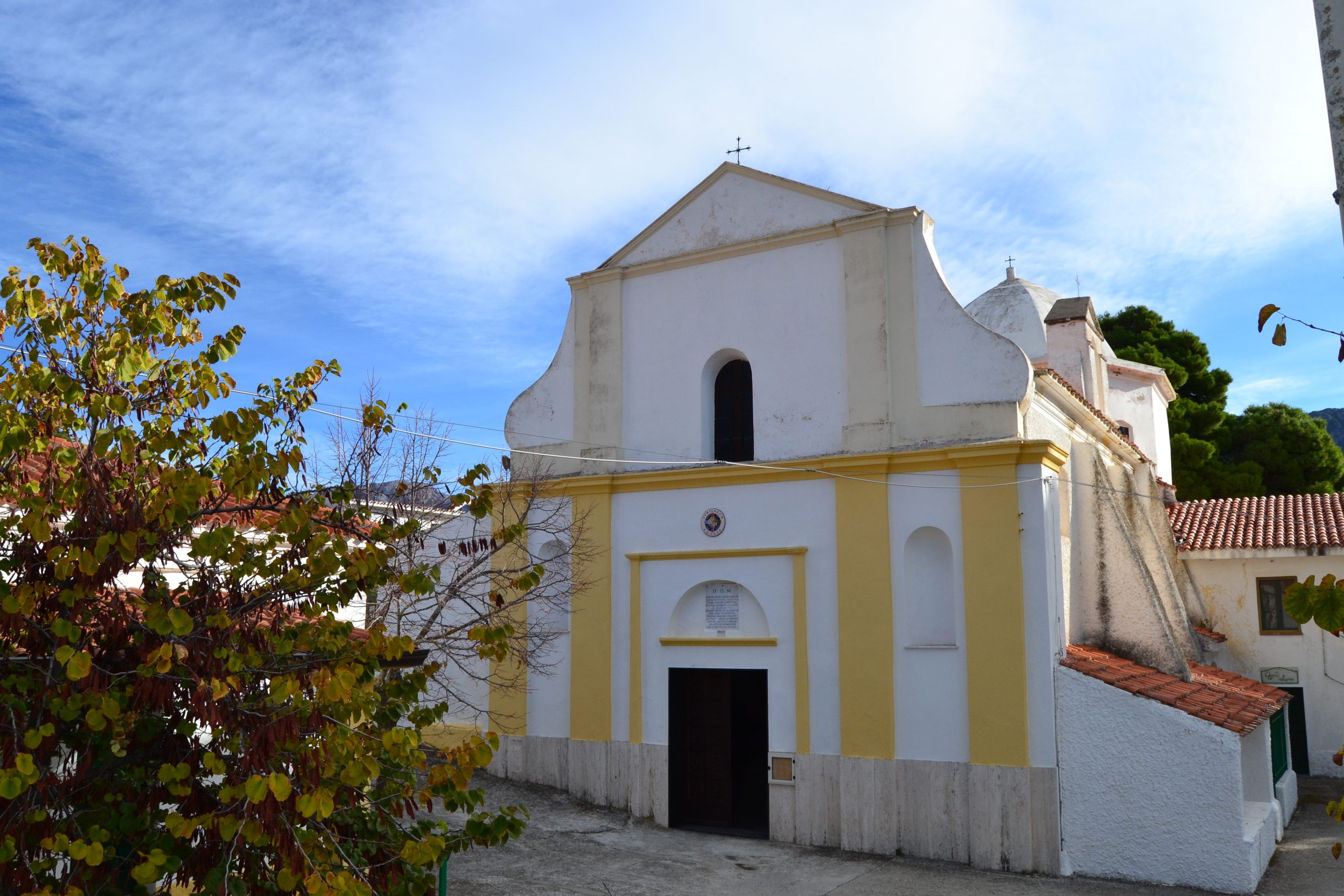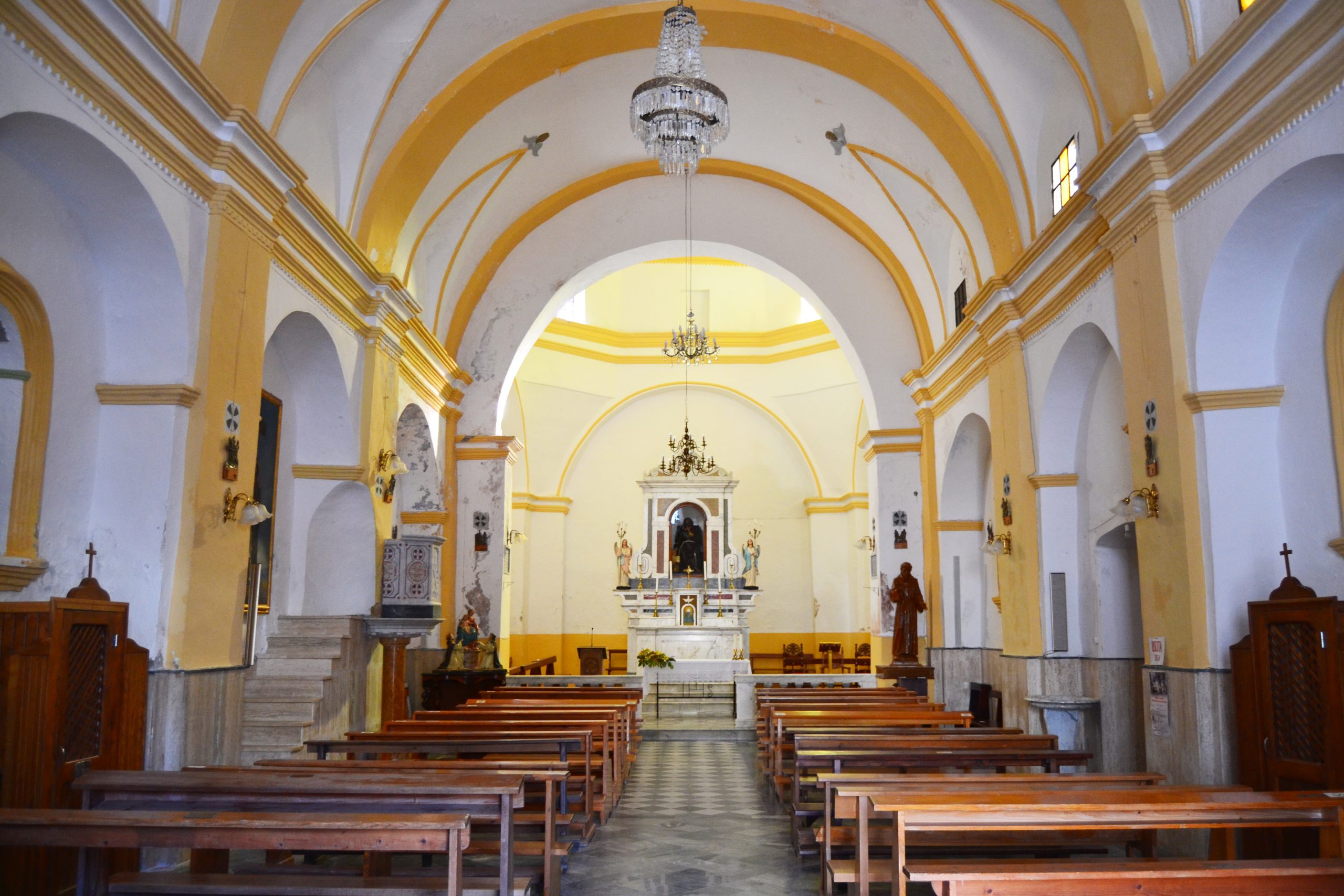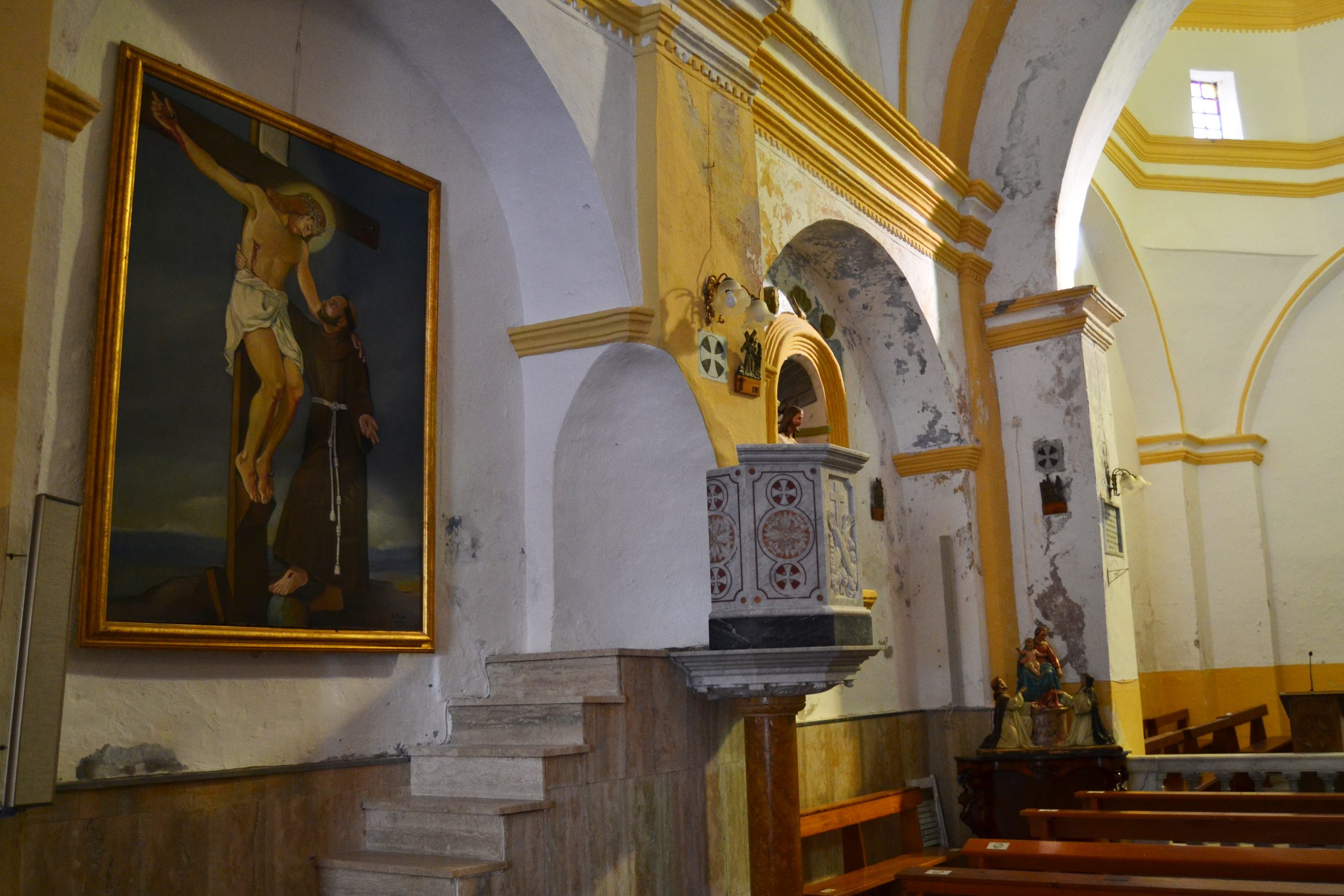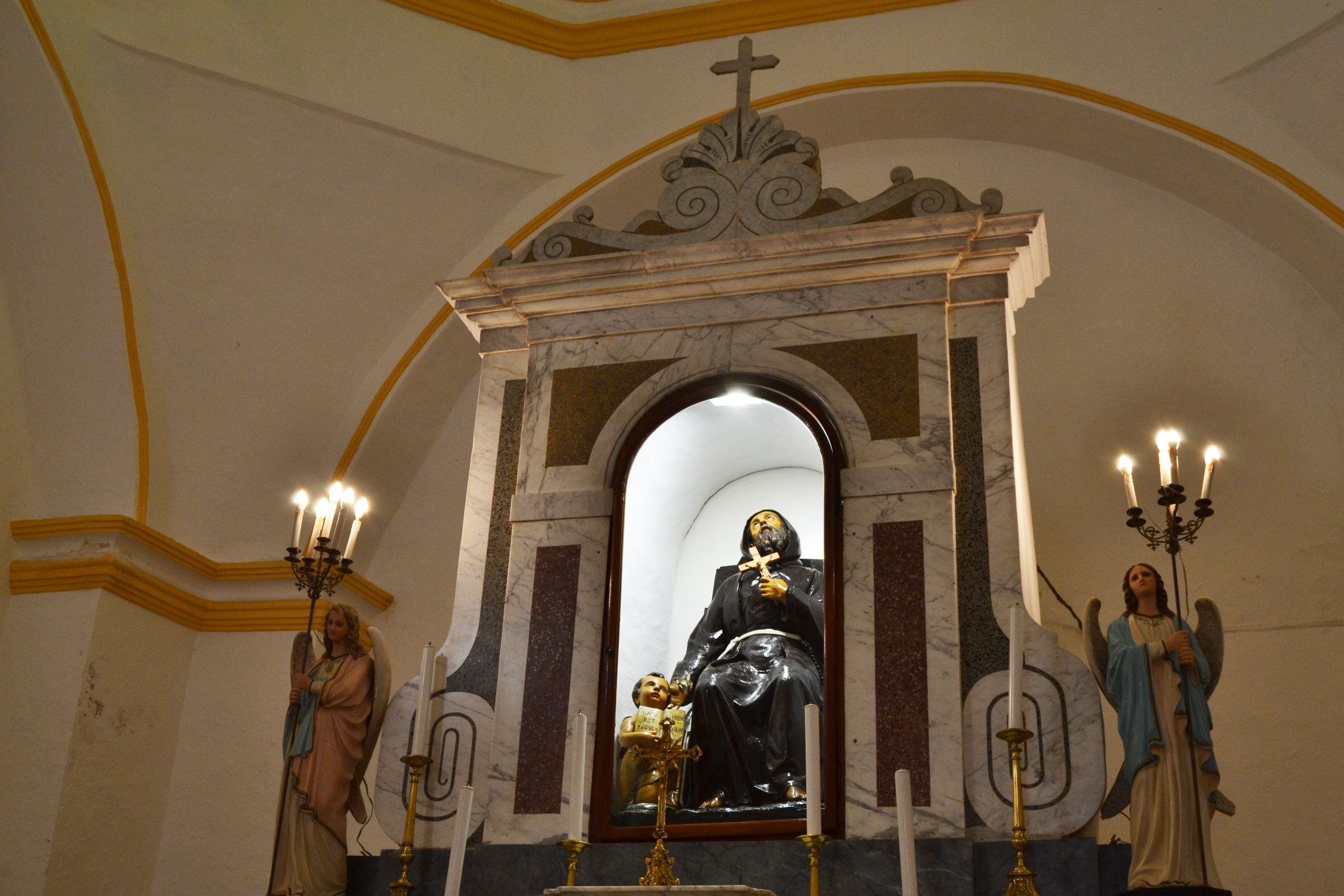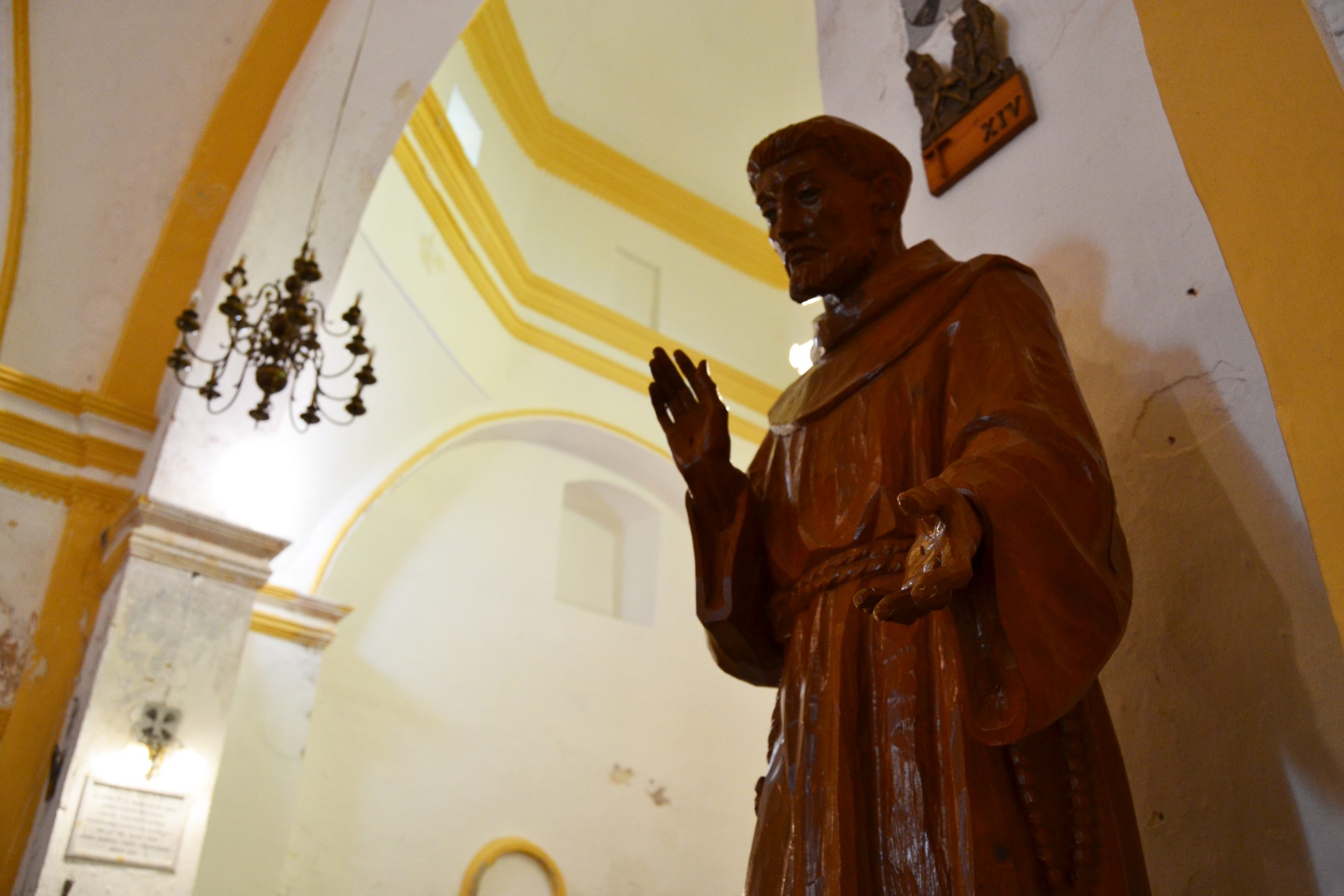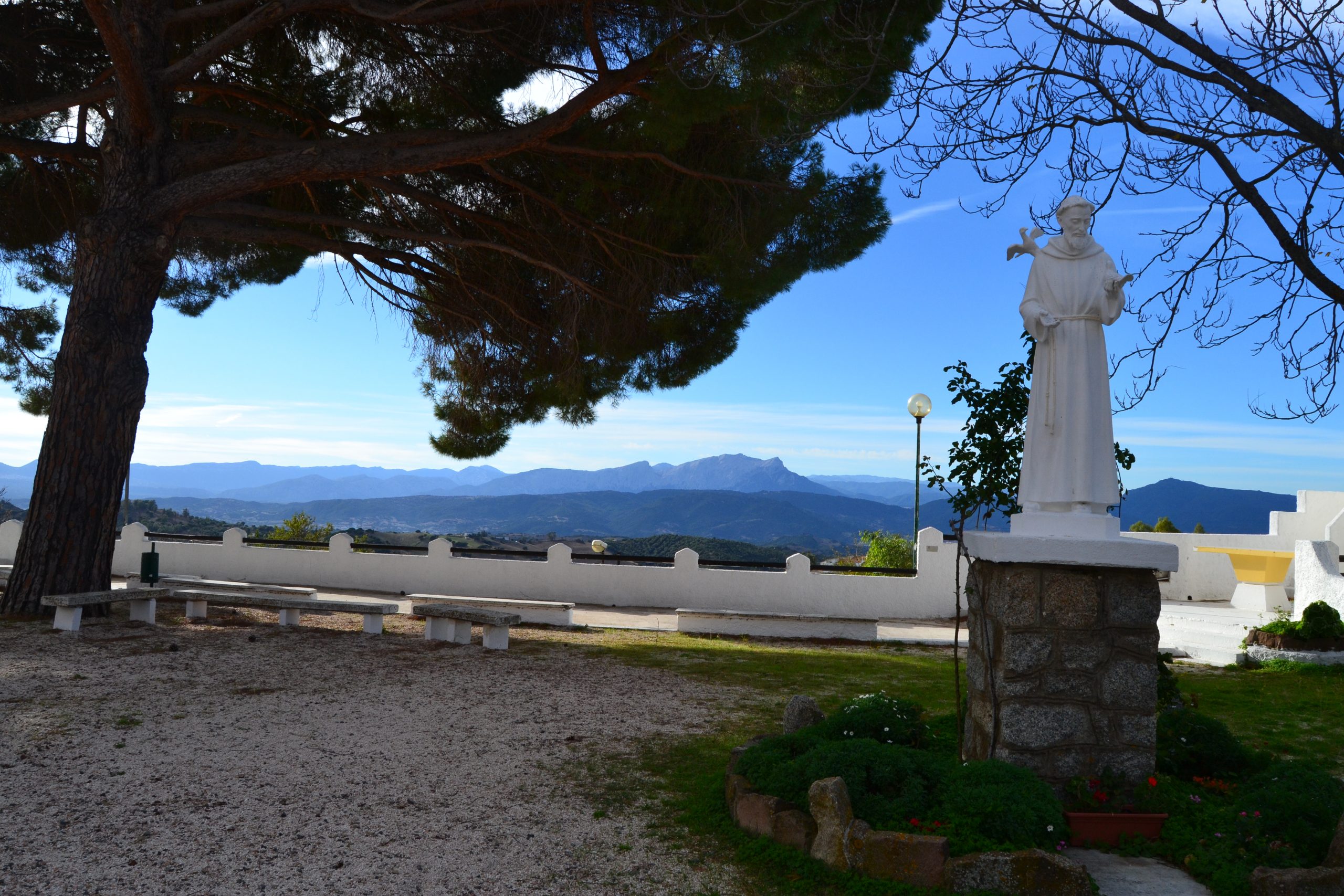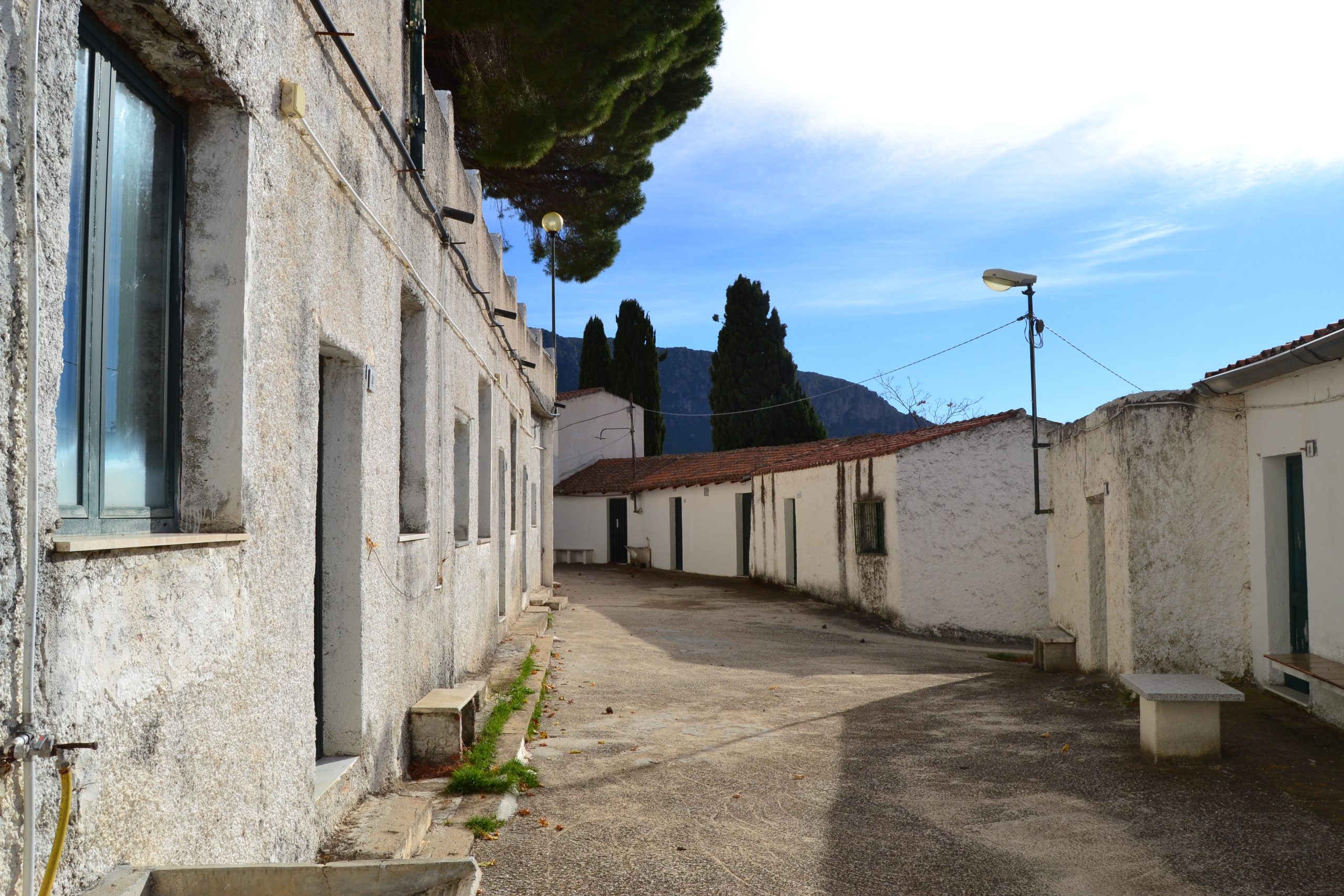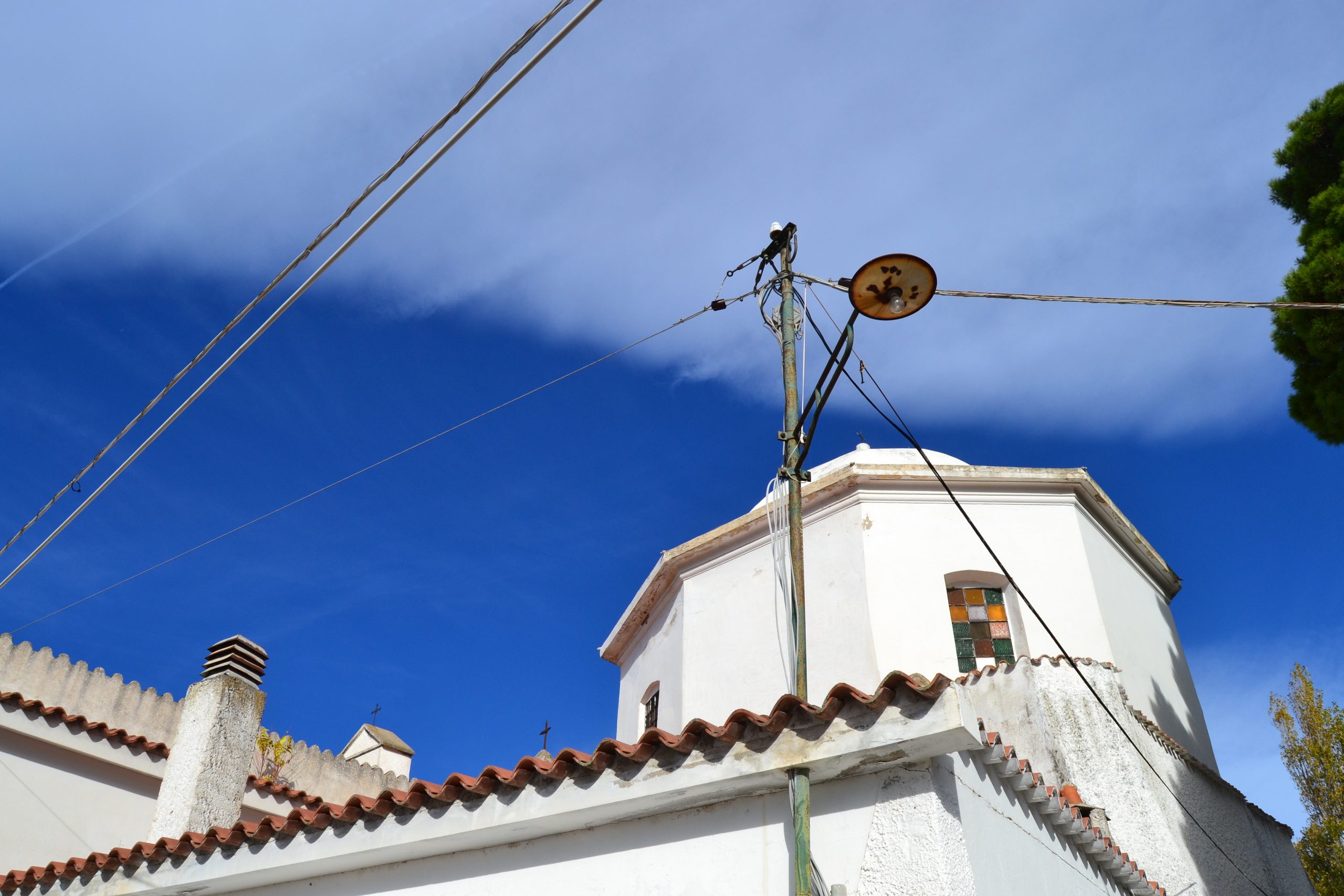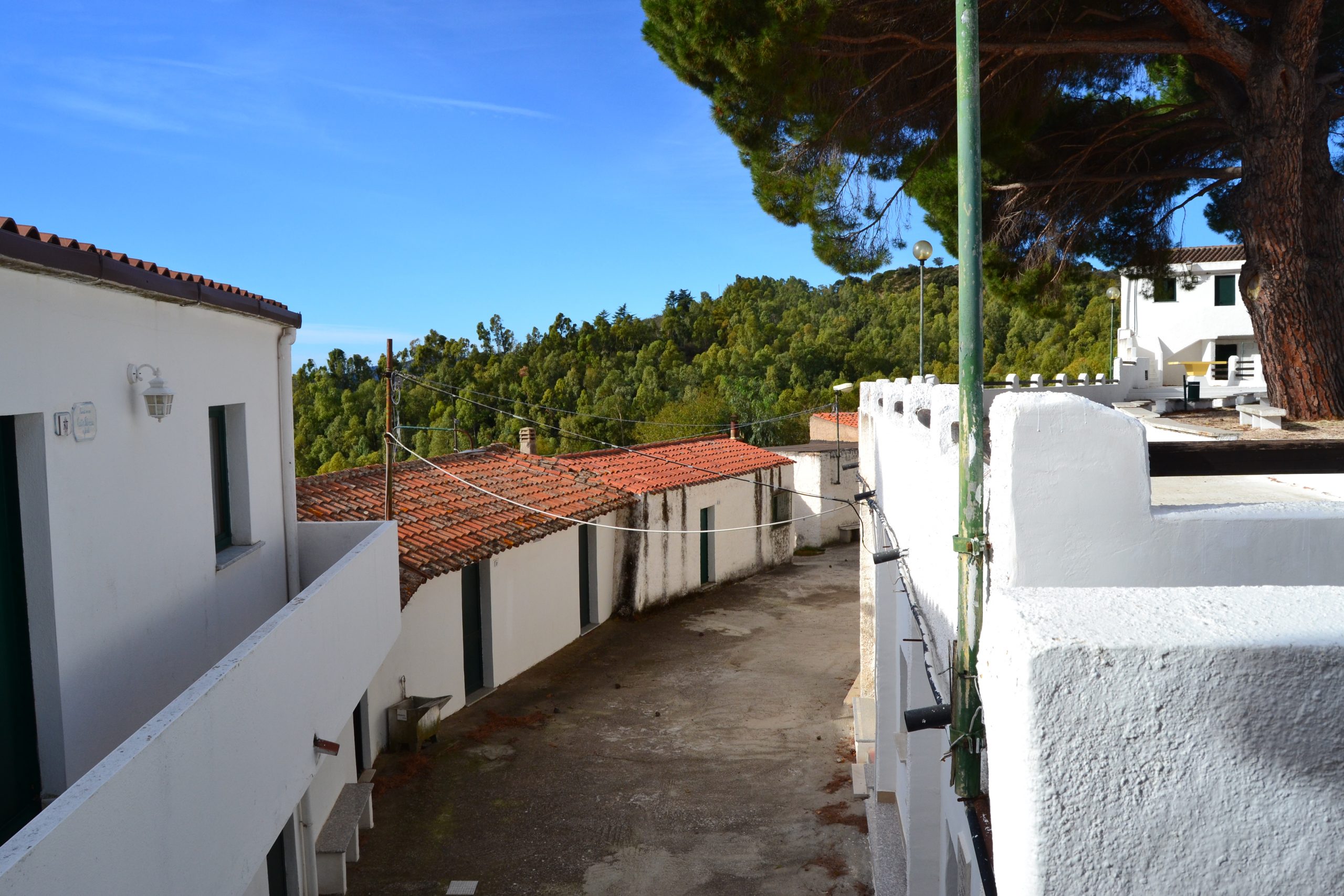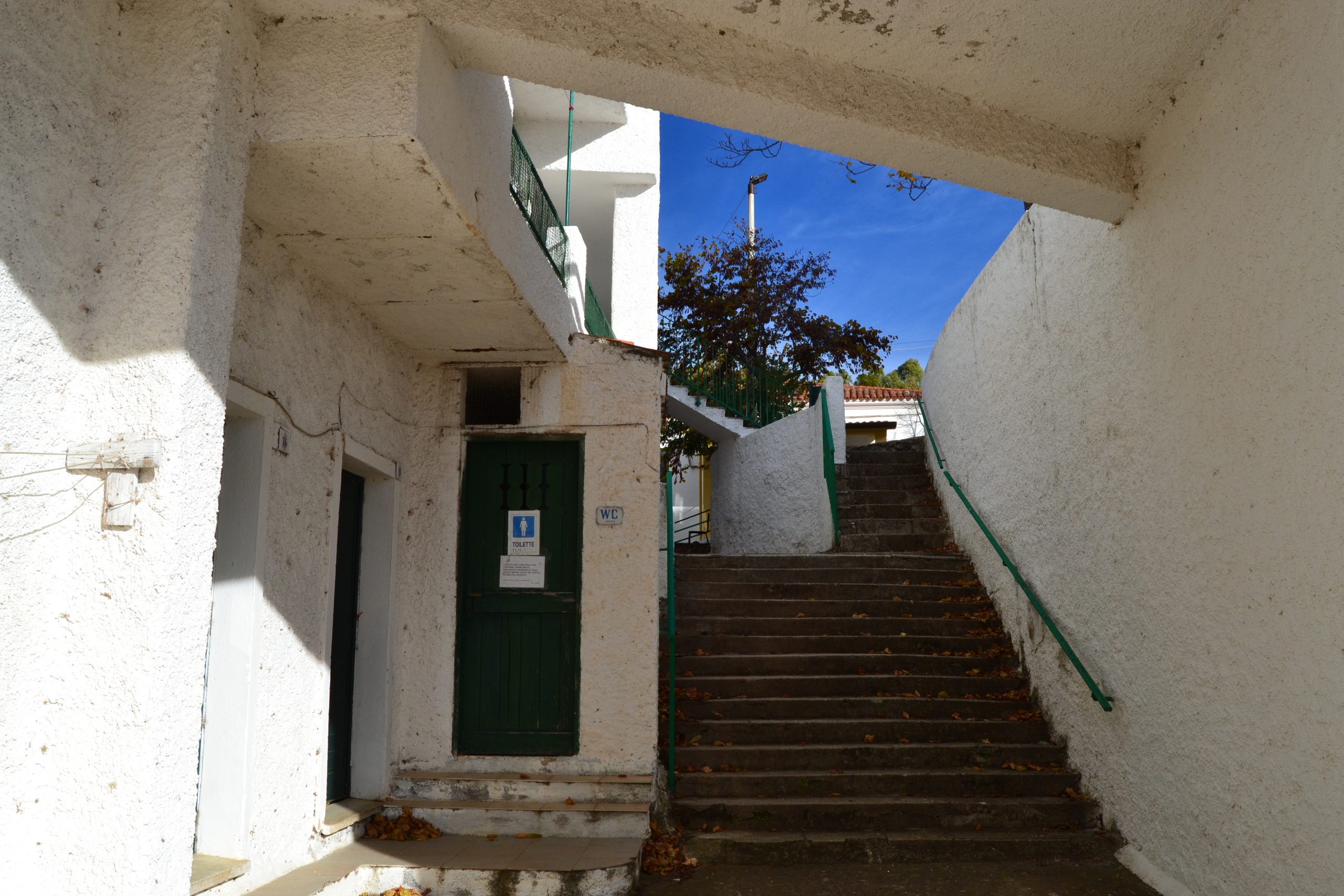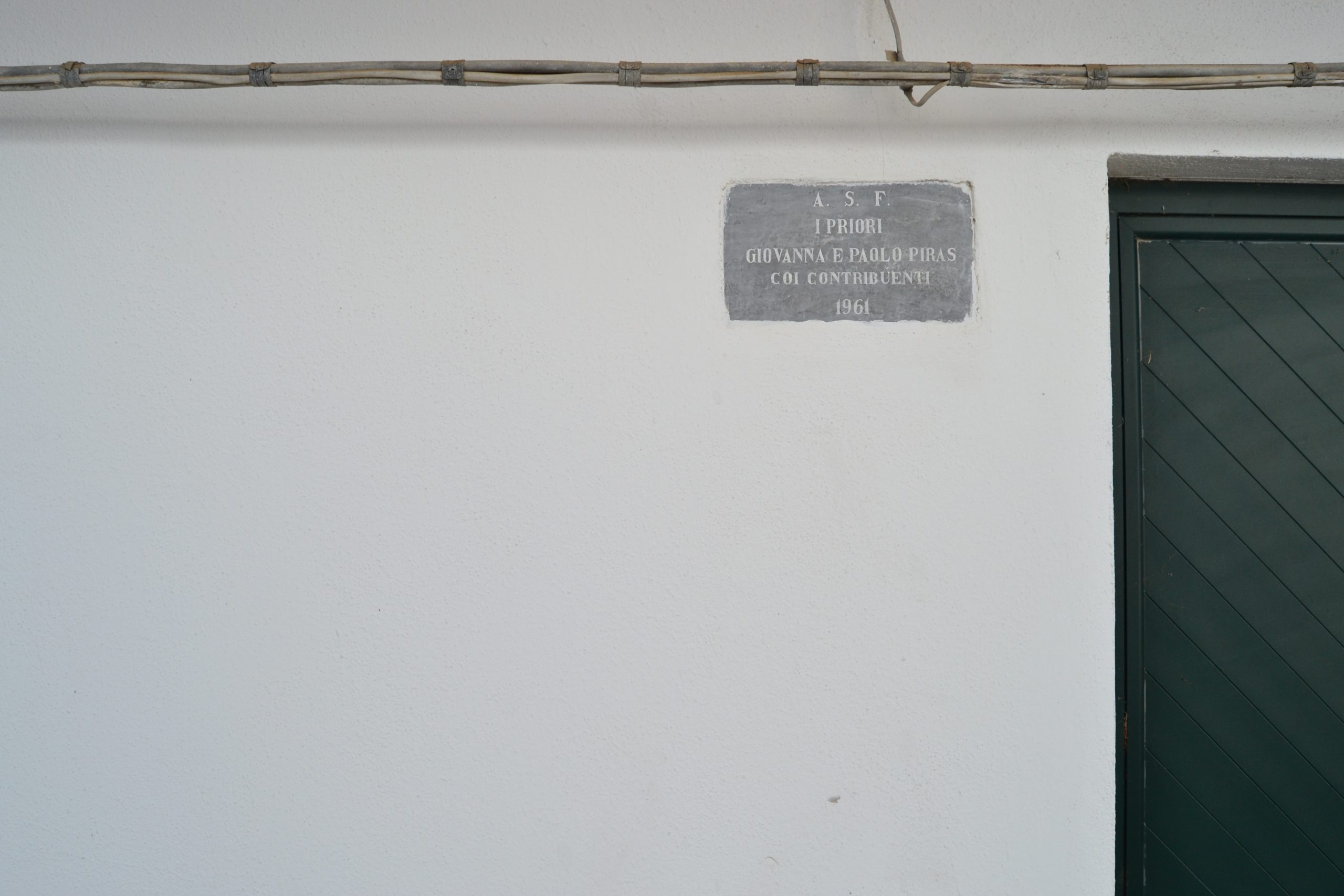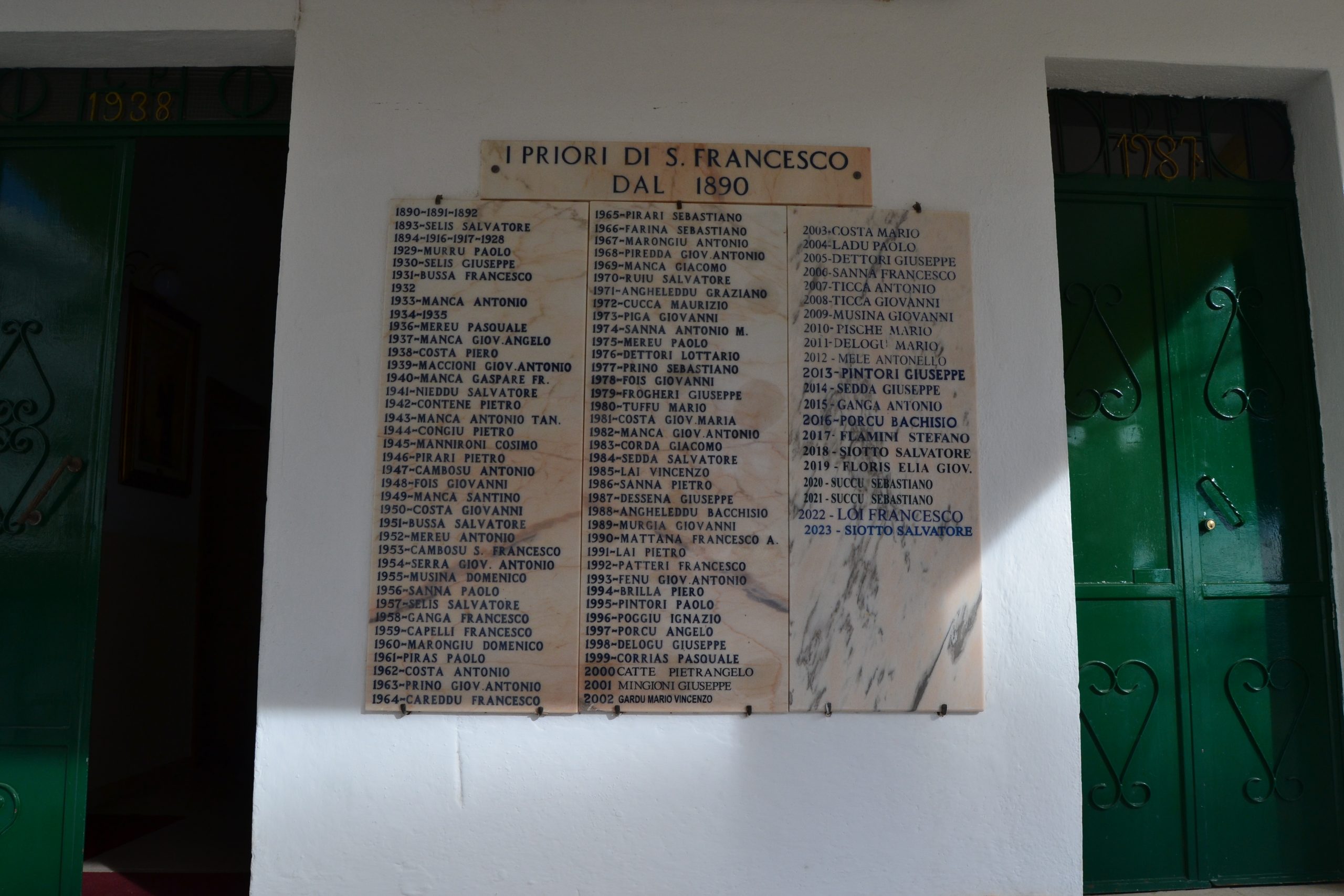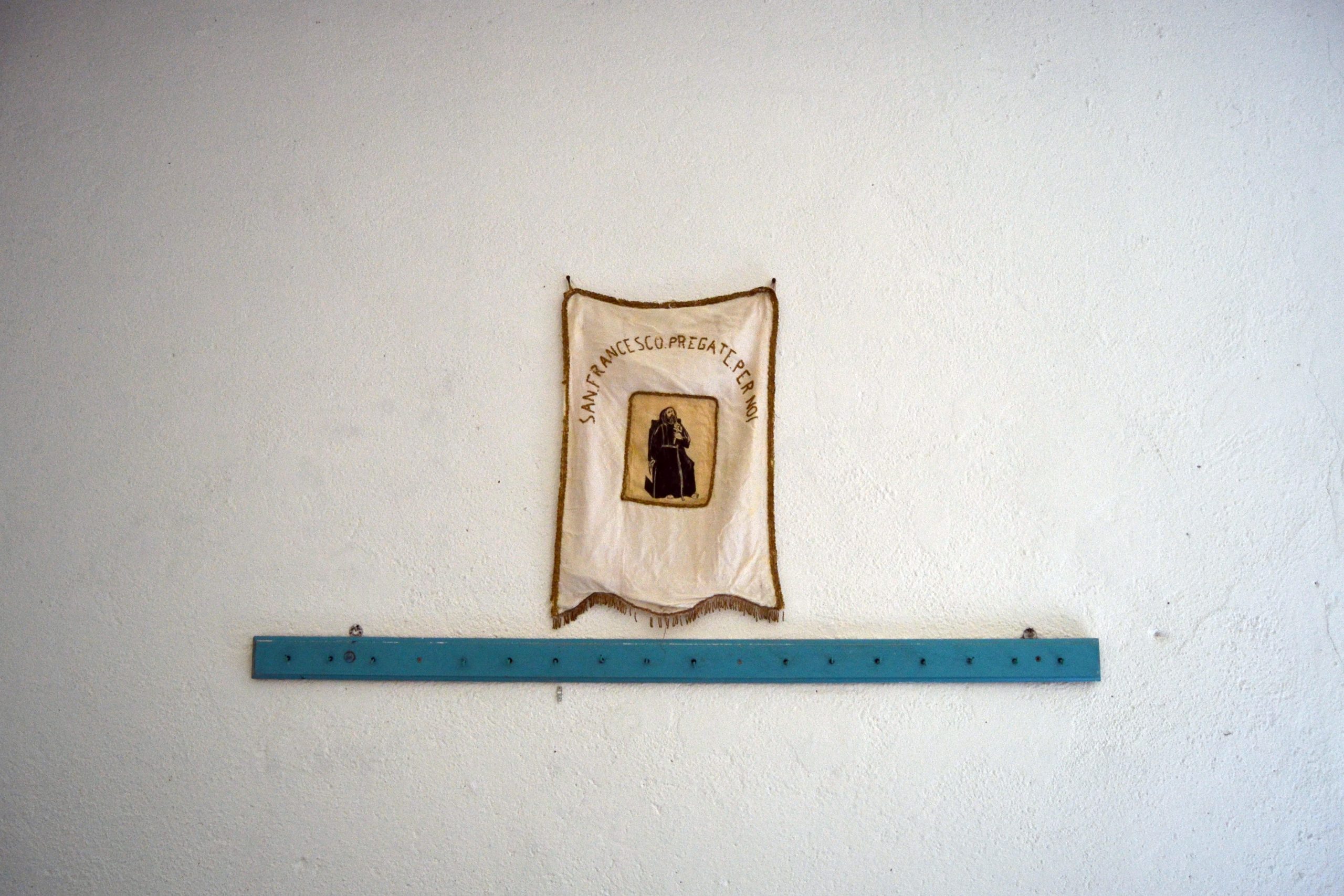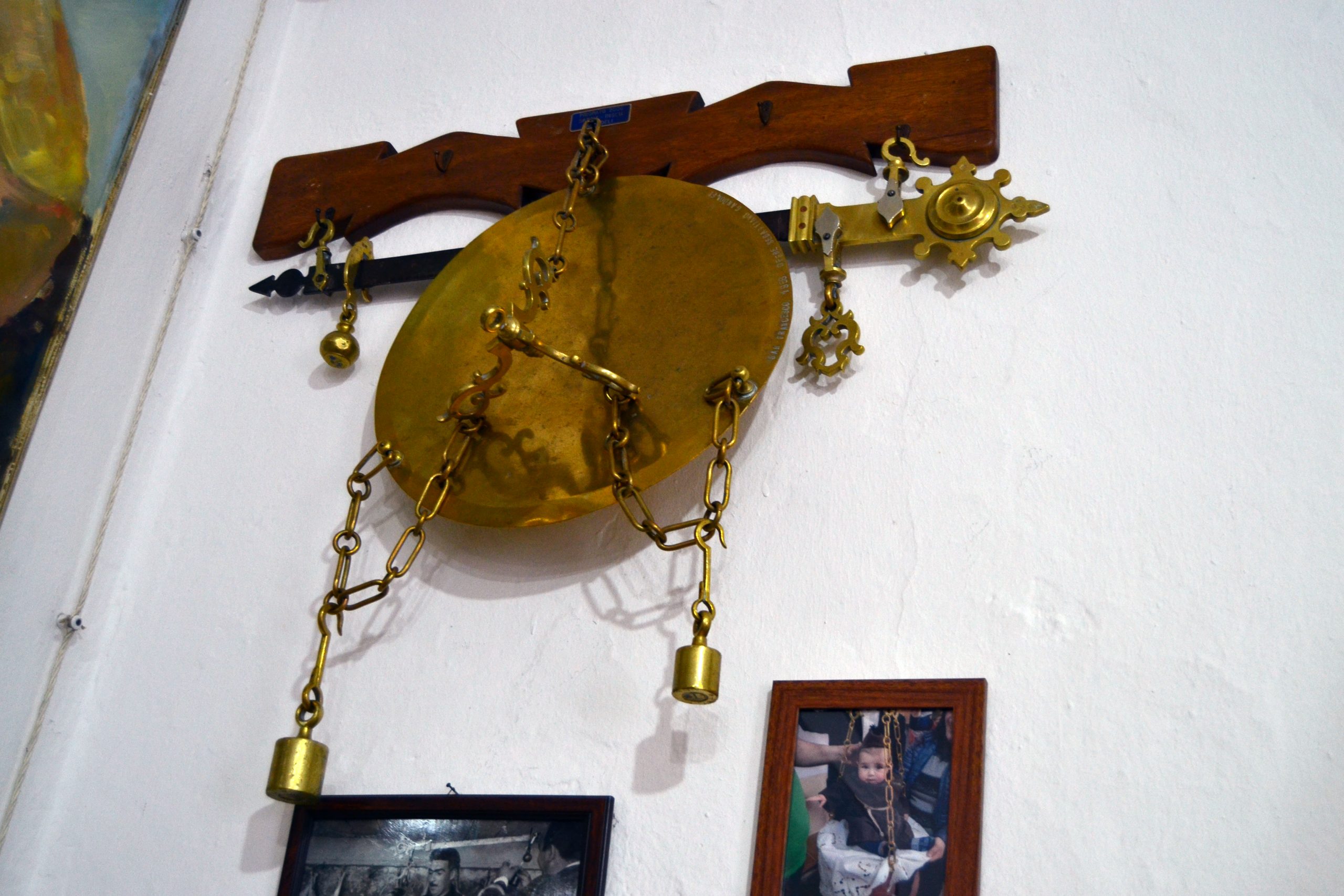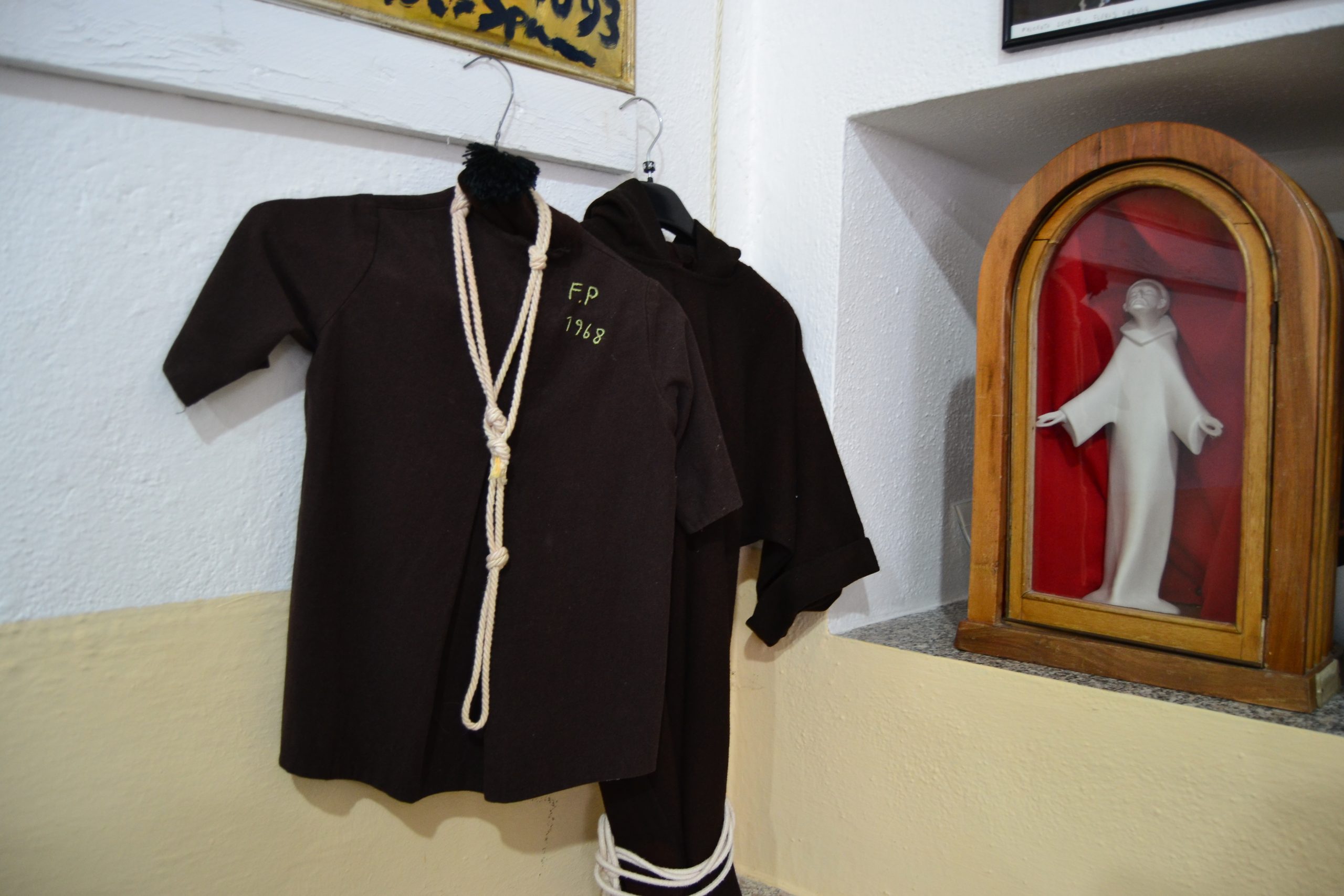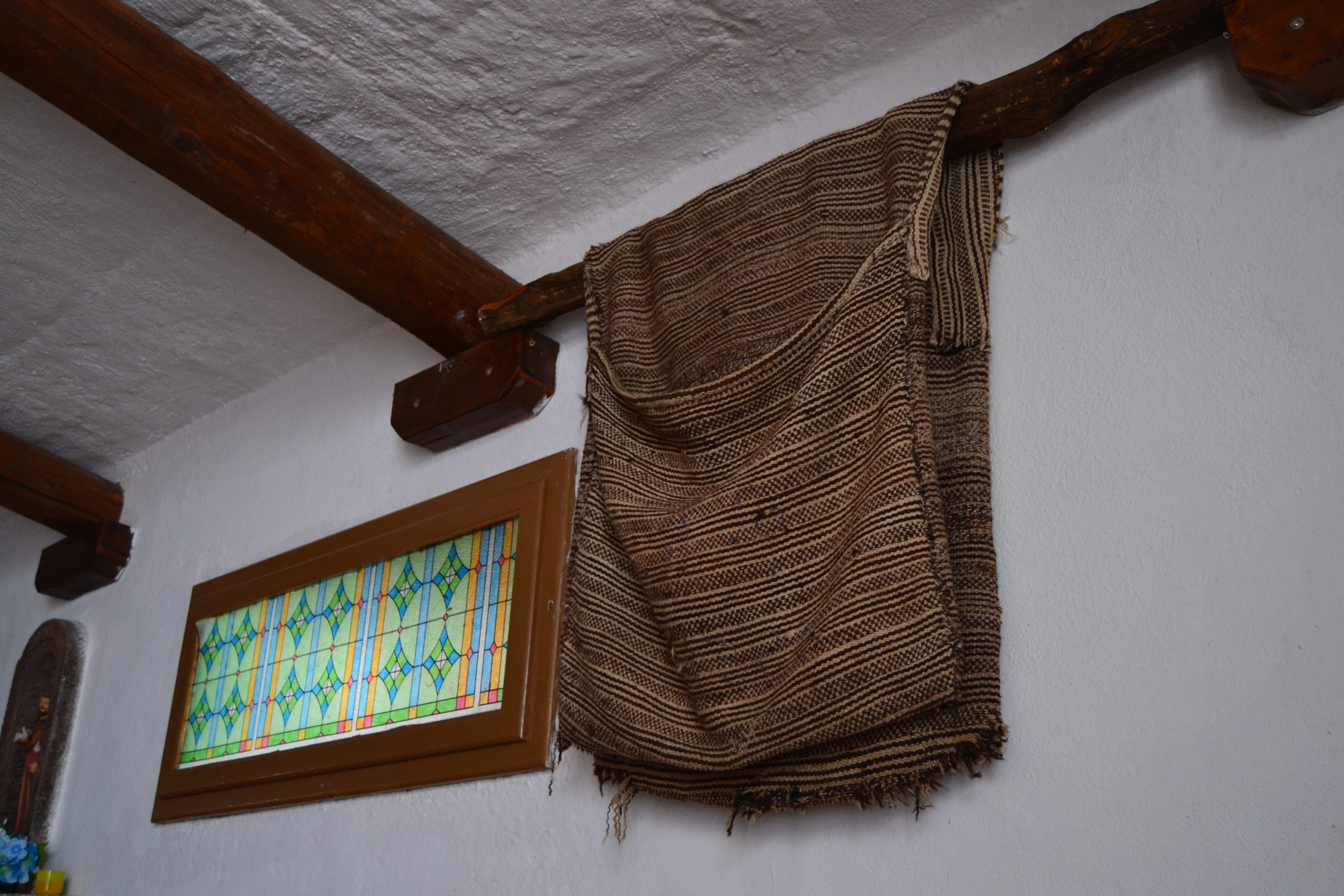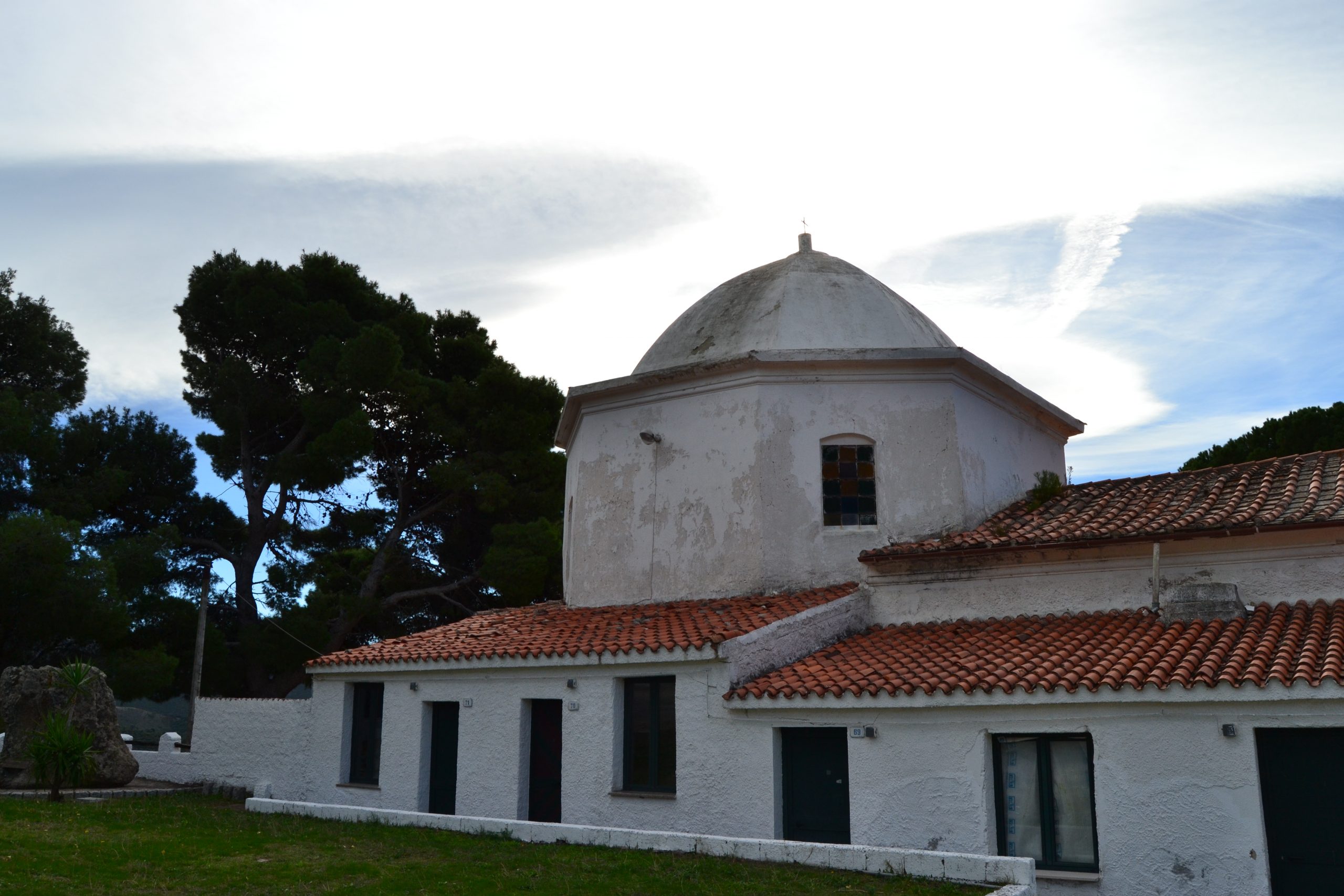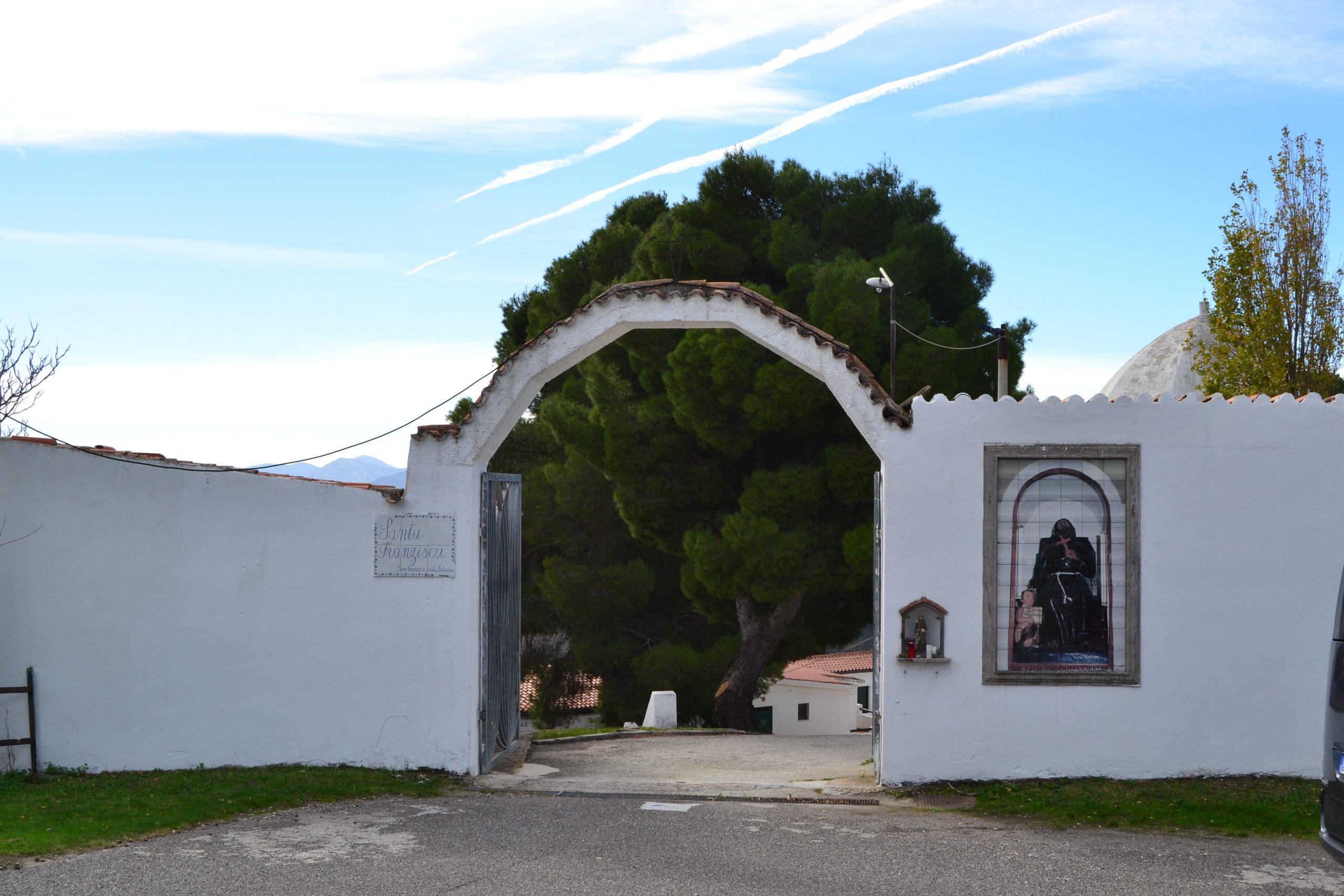“Meanwhile, mother and son were preparing to fulfill the vow to San Francesco. The church of San Francesco stands on the mountains of Lula. Legend has it that it was built by a bandit who, tired of his wandering life, promised to submit to justice and to build the church if he was absolved.”
Translation of the provided text by Grazia Deledda, Elias Portolu, ed. Ilisso, 2005, p.34
Useful dates / Festivities
On May 1st and October 4th, every year, the novena takes place.
The Sanctuary of San Francesco in Lula is one of the most renowned in Sardinia, as narrated by Deledda in her novel "Elias Portolu." Probably built around the 16th century in the scenic Montalbo, its origin is tied to legend. It is told that a young man from Nuoro, Francesco Tolu, was accused of murder. Fleeing to avoid conviction, Tolu took refuge in a cave in the hills of Lula, where he invoked San Francesco to help prove his innocence. After spending several years in hiding, Tolu was finally acquitted and, in gratitude, built a church dedicated to the saint.
The original church was small and was expanded and renovated in 1795 in a popular Baroque style. The facade is divided into three sections and three orders. The lower order features a lunette portal enclosed within a rectangular frame. The side sections each have a niche where statues of saints were once placed. The second order consists of a pediment with undulating edges and hosts a simple single window. The facade concludes with a triangular pediment. The right side of the church is characterized by deep windows, buttresses, loggias, and a small sail-shaped bell tower. An octagonal drum rises above the presbytery. The interior of the church is a single-nave barrel-vaulted space. In the center of the nave is a seventeenth-century wooden statue of San Francesco, of Neapolitan school.
The Sanctuary of San Francesco in Lula is an important place of worship and devotion for believers throughout the province of Nuoro. Traditionally, every year, many faithful make a pilgrimage to the sanctuary. The pilgrimage to San Francesco di Lula is one of the oldest and most important religious traditions in Sardinia. It takes place twice a year, on May 1st and October 4th, and involves numerous devotees from across the island. The pilgrimage begins in the heart of the night from the Church of Solitude in Nuoro, about thirty-five kilometers from the Sanctuary. Pilgrims, on foot or on horseback, face a challenging journey throughout the night. Arrival at the Sanctuary is expected the following morning, where pilgrims are welcomed by the people of Lula. The celebration begins with a solemn mass, followed by a procession in which the saint's simulacrum is carried around the town. The pilgrimage is also an opportunity to savor Sardinian culinary traditions. During the celebration, typical dishes such as "su filindeu" and "su zurrette" are offered to the faithful.
The filindeu is a traditional pasta that stands out for its unique preparation and extreme delicacy. The dough consists of only three ingredients: durum wheat semolina, water, and salt. The semolina is hand-worked with water until obtaining a homogeneous and smooth dough. Subsequently, the dough is pulled into very thin threads, which are then overlapped in three diagonal layers and interwoven, forming a thin circle with an irregular surface. The interwoven threads are then dried on asphodel leaves for about 24 hours. Once dried, the threads are crushed into small pieces, which are then cooked in a flavorful sheep broth and seasoned with fresh pecorino.
Su zurrette is sheep's blood seasoned with wild thyme, mint, homemade cheese, and crumbled carasau bread, cooked inside the animal's stomach.
One of the most suggestive rituals of the pilgrimage is the bertula, a vow in which Saint Francis is asked to heal a sick child. The child is placed in a bag, called bertula, and carried in procession. At the end of the ritual, the child is weighed, and the equivalent of his weight is donated to the Sanctuary in the form of offerings.
Another important ritual is the pesada, a sort of propitiatory sacrifice. In this rite, a sick child is weighed, and the equivalent of his weight is donated to the Sanctuary in the form of lamb or veal meat.
At the end of the celebration, the statue of Saint Francis is brought back to Nuoro. The pilgrimage concludes with an outdoor refreshment in s'Arbore, in the Marreri countryside. The festival concludes with the handover of the statue for the final stretch to the capital, where the procession circles the Church of the Rosary three times before stopping at the house of the new prior, who will safeguard the standard until the following May.


